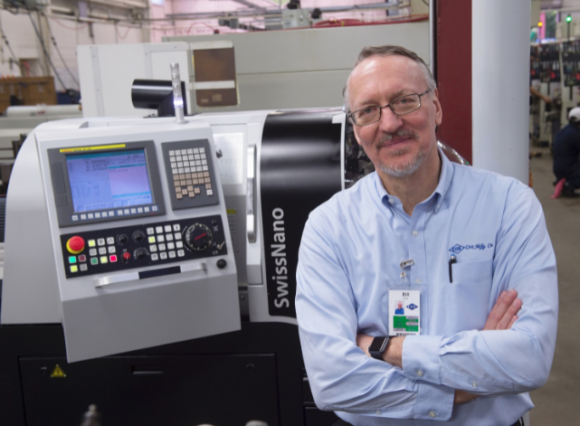Unlike the majority of machining companies right now, struggling to find enough skilled people to fulfill demand, Cox Manufacturing in San Antonio, Texas, boasts a continuous pipeline of new talent. In fact, Bill Cox, the company’s owner, says right now the company has a stack of applications for shop apprenticeships, of which he will pick an average of one for every 50 candidates.
Cox Manufacturing specializes in producing high volumes of turned parts. I’ve been to his facility several times and can vouch that it’s a treasure trove of some of the best European multi-spindle screw machines, CNC Swiss, and CNC turning centers. The company churns out 1.5 million parts every week, supplying sectors such as aerospace, firearms, defense, automotive and trucking, medical devices, and electronics.
Bill’s father, William Cox Sr., started Cox Manufacturing 65 years ago. When he suffered a fatal heart attack when Bill was 12 years old, Bill’s mother took the lead of the company. After Bill attended college for a few years he came back to run the company with his mother. At that time the company had 18 employees, today, 45 years later, it has 185.
Twelve years ago, Cox Manufacturing put together an apprenticeship program that it registered with the Department of Labor. The program is made up of an education curriculum, much of it taken from the online platform Tooling U-SME, along with some proprietary content created by Cox Manufacturing.
The other component of the apprenticeship program is “on the job training,” which today people prefer to call “on the job learning” or OJL. Cox Manufacturing’s apprenticeship program spans over three years. Each year the company maps out requirements for the OJL and academic components it chooses from courses offered by Tooling U-SME. The company has implemented software to closely track the apprentices’ skillset progress. Training coordinators and supervisors facilitate the training.
Every time employees graduate from a year in the apprenticeship program they get a pay bump and a bonus week of vacation. Apprentices training to run CNC machines start at a wage of $15 per hour, while those training on cam multi-spindles start at $16 an hour. Bill says the company pays apprentices more money to learn cam multi-spindles because the machines are more complicated and less “sexy” than CNC machines. Even with the higher starting wage, it is a challenge for Cox Manufacturing to get people to choose the path of training on the cam machines. Bill says some people try to learn the cam machines but can’t get get the hang of them, yet then they try to work on CNC machines and excel. I asked Bill if the company likes to cross train people to run both cam and CNC machines. He said it is not the company’s normal policy. He likens running different types of machines to playing both the violin and the saxophone. But, he admits, anybody who can run a cam multi-spindle can run a CNC, just not always the opposite.
Apprentice candidates visit Cox Manufacturing three times before they are chosen for the apprenticeship program. They have to take a math test, which many people fail. It consists of 12 questions, including 2-place decimal addition and subtraction, along with three word problems. Candidates are also given an AcuMax Index personality profile to predict if they will work well in the company’s environment.
Bill says in as few as 90 days apprentices can do basic setups on a 5-axis Swiss machine. They will know metrology, how to read blue prints, change tools, make offsets, and install tooling. However, 90 days is not enough time for apprentices to learn to set up cam multi-spindles because the machines have no computers to make automatic adjustments and have so many more moving parts.
Bill says that low wages is one contributing factor in young people not choosing manufacturing as a career, but the greatest reason for the shortage of skilled workers in manufacturing is that businesses haven’t invested enough in the development of their workforces.
Question: Are cam screw machines sexy or ugly?
Podcast: Play in new window | Download


2 Comments
At age 17 I was hired by a Job Shop which was running cam machines such as Bechler, Tornos and also a few Strohm and Petermann’s. None did look sexy to me at that time (1956) and now they often look ugly as operators do not know what to do with a rag in hand.
Some of the latest CNC machines are “dressed up” to look sexy.
My friend Bill points out that businesses haven’t invested enough in the development of their workforce.
Allow me to go a step further. Corporations who profit the most of the wages paid to skilled workers such as banks, insurance, investment, employment (headhunters) and many more do not spend a single penny to support the education of their future customers. In fact, even the stockholders would scream if a small amount of THEIR money (dividends) is spend on staff training or worse support of local trade schools and colleges with manufacturing curriculum.
Paul Huber LSME
COMEX
Definitely more ugly than sexy.
No wonder apprentices need more money to tempt them to go that route.